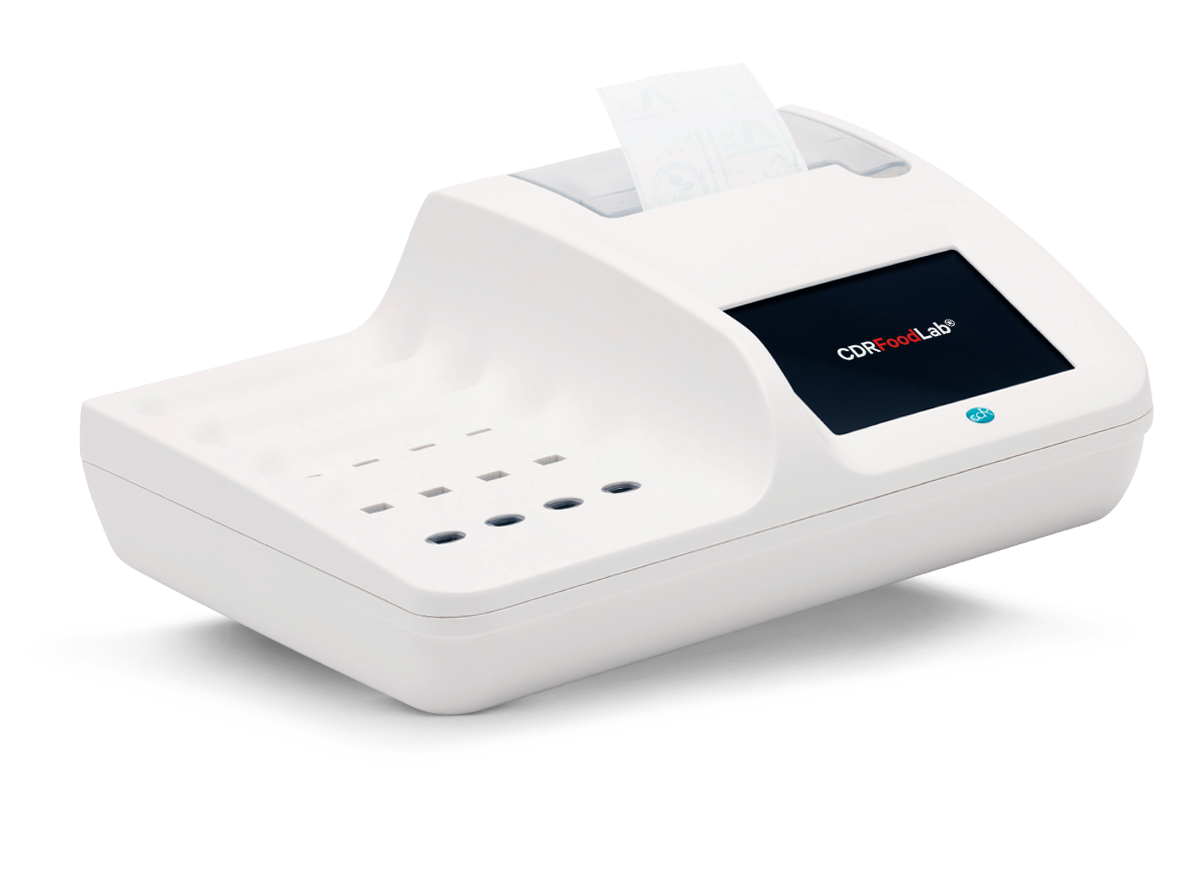Determination of Lactose in Bakery Products and Baked Goods
CDR FoodLab® allows you to determine lactose on bakery products and baked goods in order to verify the exact residual amount of lactose present in the lactose-free products.
The sample preparation is very easy and it is carried out in 4 easy steps:
- Grind the sample and weigh it as it is written in the method
- Add a specific amount of water
- Homogenise
- Centrifuge and collect the supernatant to carry out the analysis
In 10 minutes with this easy method you can obtain affordable and precise results as you obtain with the reference method (HPLC) that needs chemical skill and expertise being also very time consuming.
Method
Test principle
Lactose is a disaccharide sugar that is found in milk and is formed from galactose and glucose. Lactose makes up around 4.5~5% of milk (by weight). The enzyme lactase is essential for digestive hydrolysis of lactose in milk. Deficiency of the enzyme causes lactose intolerance.
Lactose is split in glucose and galactose. Glucose reacts with a phenolic compound through an enzymatic reaction, with peroxidase, and forms a pink coloured complex. The absorbance of the complex is read at 505 nm, and the value is directly proportional to the concentration of lactose in the sample.
Correlation curve
Here below we have the correlation of the results obtained doing the analyses with CDR FoodLab® and the reference method on low lactose milk. The correlation R2= 0,9882 is great considering the difficulty of the reference method.

The accuracy of the CDR FoodLab® method is assessed by determining the correlation between the results of the 10 milk samples obtained by the analyses with CDR FoodLab® and those obtained by a major Istituto Zooprofilattico Sperimentale using the HPLC method (High Performance Liquid Chromatography) as provided by the reference method MP 02/050 rev.6- 2018.
The table shows data obtained with two different CDR FoodLab® instruments, used by two different operators in order to also assess the reproducibility of the CDR method.
Download the Correlation study between the CDR FoodLab® method for lactose determination and the reference method MP 02/050 rev.6- 2018 carried out by a major Istituto Zooprofilattico Sperimentale.
DownloadReagent test Kits
Measuring range
| Analyses | Measuring range | Resolution | Repeatability |
|---|
The Analyzers CDR FoodLab® for a complete quality control on bakery products, baked goods, snacks and spreads
CDR FoodLab®
- Complete analysis panel, supplied already configured
- Up to 16 determinations simultaneously
- Possibility of carrying out analyses of the same sample
- Integrated printer
- Full connections (LAN - USB - Bluetooth barcode/QR code reader)
CDR FoodLab® Jr
- Partial analysis panel, supplied configured with 3 analyses of your choice, implementable
- Up to 3 determinations simultaneously
- Wireless connection to external printer
- USB connections
